Our Coastal Heath
Coastal Plant Communities
The coastal cliffs from Christison Park at Vaucluse to South Head at Watsons Bay are natural hosts for a plant community known as Sydney Coastal Sandstone Headland Heath.
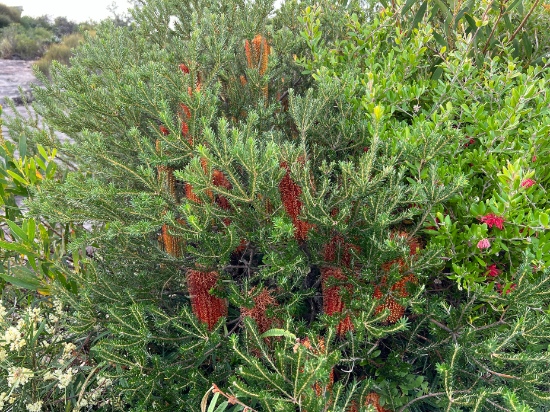
Coastal heath with a banksia, acacia and grevillea flowering.
What plants belong on our headland reserves?
These headland locations are windswept and salt-sprayed with thin sandy soils that prevent the growth of tall trees. The plants that naturally occur along Sydney's headlands include a great diversity of shrubs such as banksias, acacias, kunzeas, hakeas and epacris, along with ground covers, vines and a few grasses. Depending on the landform there may also be a few small or stunted trees. Headland heath supports a range of threatened species, such as Acacia terminalis subsp. Eastern Sydney (Sunshine Wattle).
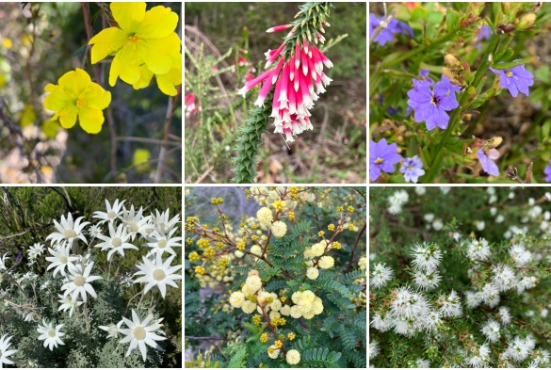
A display of heathland wildflowers from different seasons.
Why is heathland vegetation important?
Heathland species provide a spectacular display of wildflowers that are enjoyed by our community and the local wildlife. The plentiful supply of pollen and nectar from these plants attracts an array of nectar-feeding birds and mammals, which also feed on insects drawn by the abundance of flowers. The dense and sometimes prickly growth of heathland plants also provides protection for small birds, reptiles and ground-dwelling mammals.
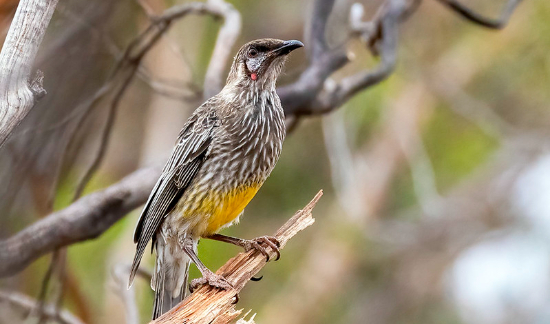
Image: David Cook, Red Wattlebirds are often seen and heard feeding in the banksias at Lighthouse Reserve.
What birds live here?
Our coastal heathland reserves provide havens that help to ensure many species of small birds remain in our area. Superb Fairy Wrens, Eastern Spinebills, Pardalotes, Grey Fantails. White-browed Scrub Wrens and Red Wattlebirds are just some of the local birds that rely on these thickets of dense vegetation. Next time you’re visiting Gap Park take a few moments to sit quietly near Jacobs Ladder lookout and you’re likely to hear and see some of these small bird species.
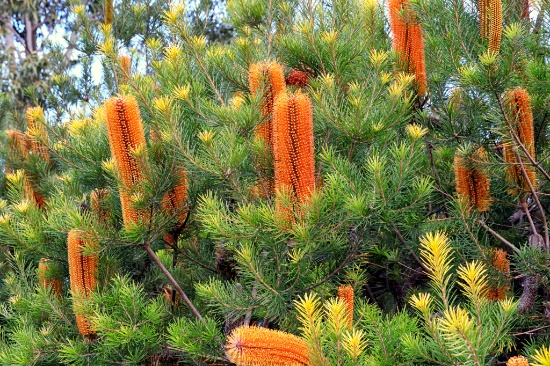
Several striking species of Banksias are found in our coastal heath including Banksia ericifolia.
Why are we planting in these areas?
Much of our heathland has been cleared for development and remnant areas are impacted by weeds, changes in natural fire cycles and trampling by people and dogs. By extending the remaining heathland areas and reintroducing plants for greater diversity and density we strengthen the habitat value and beautify our area.
Over the last 6 years our National Tree Day planting sites have been supporting revegetation of these heathland areas. Several dense plantings around Christison Park and Lighthouse Reserve have been planted by dozens of volunteers and cared for by our Bushland Maintenance team and Bushcare volunteers.
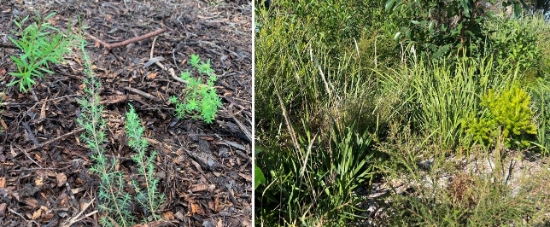
Before and after: seedlings planted at Christison Park in July 2022 and well-established by July 2023
What species are we planting?
Below are some of the local heathland species we've planted in this area.
If you're interested to learn more and help care for our heathland plant communities consider joining one of our Bushcare volunteer groups.
|
GENUS AND SPECIES
|
COMMON NAME
|
INFORMATION
|
|
Acacia myrtifolia
|
Red-stemmed Wattle
|
Shrub 0.3–3 m high, pale yellow to white flowers
|
|
Actinotus helianthi
|
Flannel Flower
|
Herb 30–90 cm high, white flowers
|
|
Astroloma pinifolium/humifusum
|
Pine Heath
|
Shrub, 50–100 cm high, red and yellow flowers
|
|
Baeckea imbricata
|
Heath myrtle
|
Shrub to 1 m high, white flowers
|
|
Banksia aemula
|
Wallum Banksia
|
Shrub or tree to 8 m high, pale yellow to greenish cream flowers
|
|
Banksia ericifolia
|
Heath-leaved Banksia
|
Small tree or shrub to 6 m high, golden-brown flowers
|
|
Banksia marginata
|
Silver Banksia
|
Small tree or shrub to 12 m high, pale yellow flowers
|
|
Banksia spinulosa
|
Hairpin Banksia
|
Shrub to 3 m high, yellow or golden flowers
|
|
Bauera rubioides
|
River Rose
|
Shrub to 2 m high, pink flowers
|
|
Correa alba
|
White Correa
|
Shrub to 1.5 m high, white flowers
|
|
Dianella congesta
|
Beach Flax Lily
|
Herb to 1 m high, flowers dark blue
|
|
Dichelachne crinita
|
Longhair Plume Grass
|
Perennial grass to 1.5 m tall
|
|
Gonocarpus teucrioides
|
Raspwort
|
Herb or subshrub, usually 20–40 cm high, flowers green to red
|
|
Grevillea buxifolia
|
Grey Spider Flower
|
Shrub 0.5–2 m high, flowers grey-brown
|
|
Grevillea speciosa
|
Red Spider Flower
|
Shrub 0.4–3 m high, red flowers
|
|
Hakea gibbosa
|
Needlebush
|
Shrub 1–3 m high, yellowish white flowers
|
|
Hakea teretifolia
|
Needlebush
|
Shrub 1–3 m high, white to yellowish flowers
|
|
Imperata cylindrica
|
Blady Grass
|
Perennial grass to 1.2 m tall
|
|
Indigofera australis
|
Australian Indigo
|
Shrub up to 2.5 m tall, mauve flowers
|
|
Isopogon anemonifolius
|
Broad-leaf Drumsticks
|
Shrub 1–1.5 m high, yellow flowers
|
|
Kunzea ambigua
|
Tick Bush
|
Shrub to 3.5 m high, white flowers
|
|
Leptospermum laevigatum
|
Coast Teatree
|
Small tree or shrub to > 4 m high, white flowers
|
|
Lobeliaalata(Lobelia anceps)
|
Angled lobelia
|
Herb to 50cm long, flowers blue to white
|
|
Lomandra longifolia
|
Spiny-headed mat-rush
|
Perennial herb 50-100 cm tall
|
|
Melaleuca armillaris
|
Bracelet Honey Myrtle
|
Shrub to 5 m high with hard or corky bark, white flowers
|
|
Melaleuca hypericifolia
|
Hillock Bush
|
Shrub to 6 m high, red flowers
|
|
Olearia tomentosa
|
Toothed Daisy-bush
|
Shrub to 2 m high, flowers blue or white
|
|
Platysace lanceolata
|
Shrubby Platysace
|
Shrub 60–150 cm high, white or cream flowers
|
|
Scaevola ramosissima
|
Purple Fan-flower
|
Herb to 40 cm high, flowers pale violet to purple
|
|
Sporobolus Virginicus
|
Sand Couch
|
Perennial grass to 70 cm tall
|
|
Westringia fruticosa
|
Coastal Rosemary
|
Shrub to 1.5 m high, white flowers
|
|
Woollsia pungens
|
Snow wreath
|
Shrub usually 20–100 cm, flowers white to dark pink
|
More information